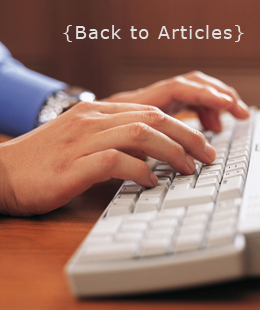 |
||||

Contact Us
|
Continued... Page 3 > The Visualized Opening Statement In addition to the psychological and cultural bias of most jurors in favor of visual evidence, it is much more efficient means of communication, enhancing the jury's ability to follow what you are saying in the opening. Alan Morrill recognized this nearly 20 years ago: With anything more than a simple set of facts involving an intersection collision, it is probably safe to say that following opening statements through words alone, not one juror has a clear picture in his mind as to how the accident occurred. It is a good bet that about half the jury is completely lost, perhaps some of them have a completely erroneous picture created in the mind's eye. 7 The time is long overdue for fundamental change in the traditional approach to opening statement, one which turns it into a predominantly visual medium with verbal accompaniment. The effective trial lawyer of the 1990s works hand in hand with a creative consultant or art director to devise ways of visualizing the key points for opening to both persuade and inform jurors. The few attorneys who have already taken this approach have experienced dramatic success. The forms and format of visual evidence will vary with the proof problems unique to each individual case. Computer animation may be the key to success in one case and a waste of money in another. A simple storyboard may be more effective than a filmed accident reconstruction. There are no fixed rules other than that the lawyer should focus on ways to but the case across visually from the moment it comes into his/her office and plan a legal strategy to make sure that all of these visuals are available for use in opening statement. This article will now discuss approaches in how to facilitate this goal. THE OPPOSITION RESPONSE: KEEP EFFECTIVE VISUALS OUT OF OPENING AT ALL COSTS Basic ìa picture is worth a thousand wordsî instinct tells any trial lawyer than an effective visual display can galvanize a jury to a particular point of view. Significant use of visual evidence is definitely seen as a potential threat by the other side, and correctly so. As a young public defender, I noticed very quickly that even my fairly primitive, homespun trial visuals were of great interest to made my opponents. Whenever I came into court with a black artist's portfolio in hand, in addition to a briefcase, I got at least a second look from the prosecutor. An advocate who intends to use effective visual evidence in opening statement can count on determined opposition and howls of exasperated outrage from the other side. There will be no gentleperson's agreement stipulating to the use of such visuals. The representative flavor of what opposition response can be expected is drawn from a relatively recent case that I tried: |
|||
Disclaimer | Sitemap | Contact Us | 2008 All Rights Reserved | Site Developed by Catherine Flemming | Designed by Suryn Longbotham |
||||